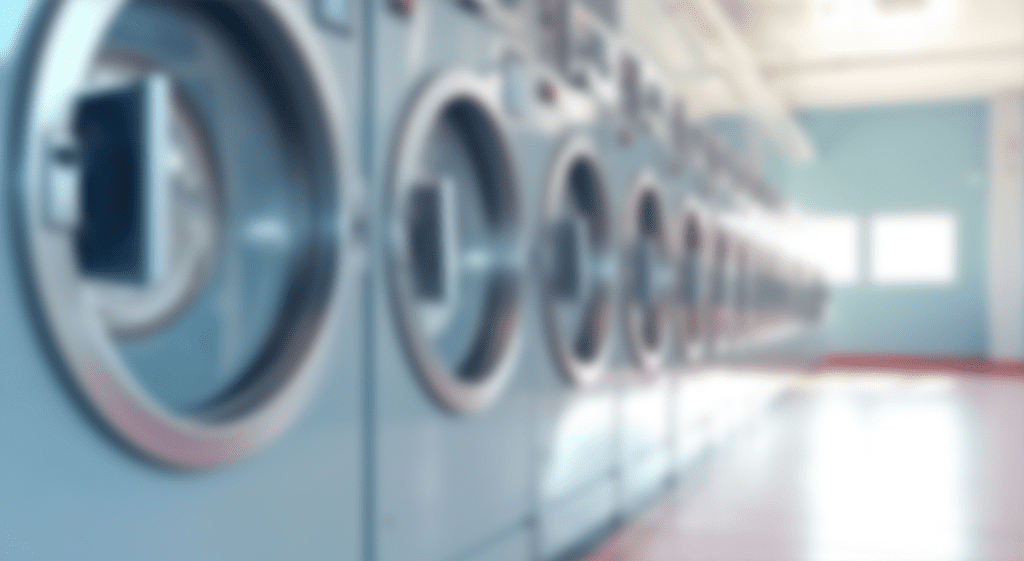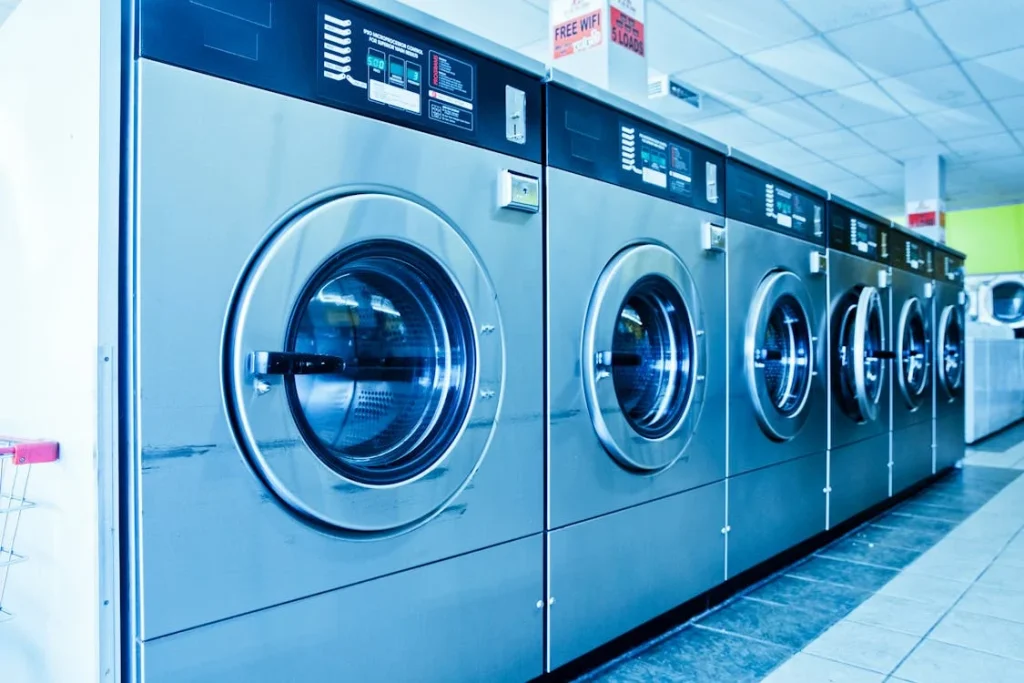Industrial washers are essential tools in industries like healthcare, hospitality, manufacturing, and food processing. Yet, these machines are notorious for consuming vast amounts of water, driving up costs and straining resources. By understanding their operation and implementing water-saving strategies, facilities can improve efficiency, reduce expenses, and contribute to sustainability to optimize water usage.
Table of Contents
- 1. Understanding Industrial Washers and Water Consumption
- 2. Optimizing Water Usage in Industrial Washers
- 3. Reducing Water Costs in Industrial Washers
- 4. Case Studies: Successful Water Conservation in Industrial Washers
- 5. Conclusion: The Future of Water Conservation in Industrial Washers
- 6. FAQs
1. Understanding Industrial Washers and Water Consumption
Industrial washers vary widely in size, function, and water use. Grasping the nuances of their operation is the first step toward effective water conservation.

1.1. Types of Industrial Washers
Each type of industrial washer serves specific purposes, with varying water usage patterns.
1.1.1. Tunnel Washers
Tunnel washers are continuous-flow machines designed for high-volume operations. Items move through different chambers for washing, rinsing, and drying. They are commonly found in industries such as automotive manufacturing and healthcare, where consistent cleaning is crucial.
1.1.2. Batch Washers
Batch washers operate in fixed cycles, cleaning items in a single chamber. These machines are versatile, suitable for applications ranging from hospital laundries to industrial kitchens.
1.1.3. Continuous Washers
Continuous washers combine aspects of tunnel and batch washers, offering uninterrupted cleaning processes. They’re widely used for textiles, food processing equipment, and metal parts, consuming significant water depending on load size.
1.2. Water Consumption in Industrial Washers
Water usage in industrial washers is influenced by several factors, making optimization a multi-faceted challenge.
1.2.1. Factors Affecting Water Usage
Key factors include washer size, type of items being cleaned, wash cycle parameters, and equipment efficiency. For example, heavily soiled items or prolonged cycles lead to higher water usage.
1.2.2. Average Water Consumption
Industrial washers can consume anywhere from 20 to 50 gallons of water per cycle. Monitoring this consumption is essential to identify patterns and potential inefficiencies.
2. Optimizing Water Usage in Industrial Washers
Reducing water usage in industrial washers requires a blend of technology, maintenance, and innovative practices.
2.1. Efficient Water Filtration Systems
High-quality filtration systems play a pivotal role in optimizing water usage by removing contaminants that impair cleaning efficiency.
2.1.1. Benefits of Efficient Filtration
Filtration improves water quality, reducing the need for excessive rinsing. This minimizes water consumption while maintaining cleaning performance.
2.1.2. Types of Filtration Systems
Popular filtration technologies include sand filters, cartridge filters, and advanced membrane filters. Facilities should choose a system based on the specific contaminants and operational requirements.
2.2. Water Recovery Systems
Recycling wastewater is one of the most impactful ways to reduce water usage.
2.2.1. Benefits of Water Recovery
Water recovery systems capture wastewater, filter it, and reuse it in subsequent wash cycles. This approach significantly reduces the demand for fresh water and lowers disposal costs.
2.2.2. Types of Water Recovery Systems
Technologies like reverse osmosis, evaporation, and advanced filtration are common. For example, reverse osmosis is ideal for facilities requiring high-quality reclaimed water.
2.3. Advanced Wash Cycles and Programs
Modern washers are equipped with programs that optimize water and energy usage.
2.3.1. Sensor-Based Wash Cycles
Sensors detect the level of soiling in items, automatically adjusting water volume and cycle duration. This eliminates unnecessary water use and improves efficiency.
2.3.2. Energy-Efficient Wash Programs
Energy-efficient programs balance water usage with energy consumption. These cycles use cooler water and optimized rinse times to deliver effective cleaning while conserving resources.
2.4. Proper Maintenance and Cleaning
Routine maintenance ensures washers operate at peak efficiency, preventing water waste.
2.4.1. Regular Inspections
Inspect washers regularly to identify leaks, damaged components, or inefficiencies that increase water usage.
2.4.2. Cleaning Procedures
Removing scale, debris, and mineral deposits from internal components helps maintain optimal performance and reduces water consumption.
3. Reducing Water Costs in Industrial Washers
Optimizing water usage directly impacts operational costs, making it a financial imperative for businesses.
3.1. Water Tariff Analysis
Understanding how water tariffs work can unlock opportunities for cost savings.
3.1.1. Understanding Water Tariffs
Water tariffs often include tiered pricing, where rates increase with higher consumption levels. Facilities can minimize costs by reducing usage during peak pricing periods.
3.1.2. Identifying Cost-Saving Opportunities
Analyze water bills to identify patterns and adjust operations accordingly. For instance, scheduling washes during off-peak hours can lower expenses.
3.2. Water-Efficient Equipment
Upgrading to water-efficient equipment is a long-term investment with significant cost-saving potential.
3.2.1. Selecting Energy-Efficient Models
Look for washers with high efficiency ratings. These machines often use 30-50% less water compared to older models.
3.2.2. Investing in Water-Saving Technologies
Consider retrofitting existing machines with water-saving devices like low-flow nozzles and valves. These simple additions can dramatically cut water usage.
3.3. Water Conservation Initiatives
Encouraging a culture of water conservation is just as important as investing in technology.
3.3.1. Employee Training and Awareness
Train employees on water-saving practices, such as promptly reporting leaks or using water efficiently during manual cleaning tasks.
3.3.2. Implementing Water-Saving Practices
Adopt policies that encourage responsible water usage, such as shutting off water supply when not in use or reusing rinse water when possible.
4. Case Studies: Successful Water Conservation in Industrial Washers
Real-world examples demonstrate how businesses can achieve substantial water savings.
4.1. Case Study 1: Manufacturing Plant
A manufacturing facility installed water-efficient washers and rainwater harvesting systems. Combined with optimized wash cycles, these measures reduced water usage by 35% and saved $80,000 annually.
4.2. Case Study 2: Laundry Facility
A commercial laundry integrated water recycling and sensor-based cycles, cutting water consumption by 40%. The investment paid for itself within two years through reduced utility bills.
4.3. Case Study 3: Food Processing Plant
A food processing plant implemented a robust water conservation program, installing advanced filtration systems and optimizing cleaning procedures. This resulted in a 25% drop in water usage and compliance with environmental regulations.
5. Conclusion: The Future of Water Conservation in Industrial Washers
Water conservation is more than a sustainability goal—it’s a business imperative. By adopting efficient equipment, recovery systems, and employee awareness programs, industries can minimize water consumption, cut costs, and enhance their environmental responsibility. As technology advances, opportunities to optimize water usage will only grow, making now the perfect time to invest in sustainable practices.
6. FAQs
1. Why is water conservation important in industrial washers?
Water conservation reduces operating costs, minimizes environmental impact, and ensures compliance with regulations.
2. How much water can modern industrial washers save?
Modern washers can cut water usage by 30-50%, depending on the equipment and settings.
3. Are water recovery systems worth the investment?
Yes, water recovery systems reduce water bills and help facilities meet sustainability goals, offering significant long-term savings.
4. What role does employee training play in water conservation?
Training ensures employees understand and adopt water-saving practices, reducing waste and promoting efficiency.
5. Can older washers be retrofitted with water-saving technology?
Yes, many older machines can be upgraded with features like low-flow nozzles and smart sensors to improve water efficiency.
Here are some other articles that we think might interest you:
Optimizing Water Usage Consumption & Reducing Costs in Industrial Washers


